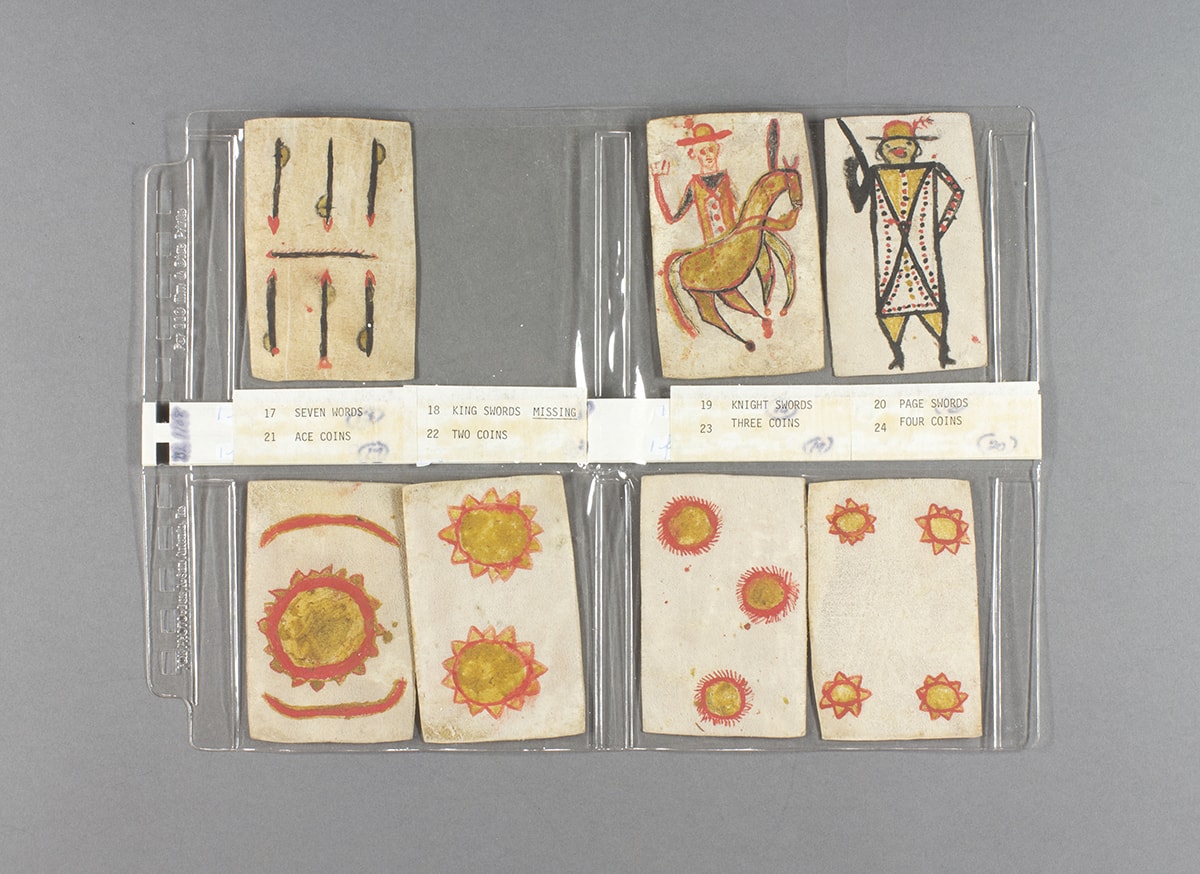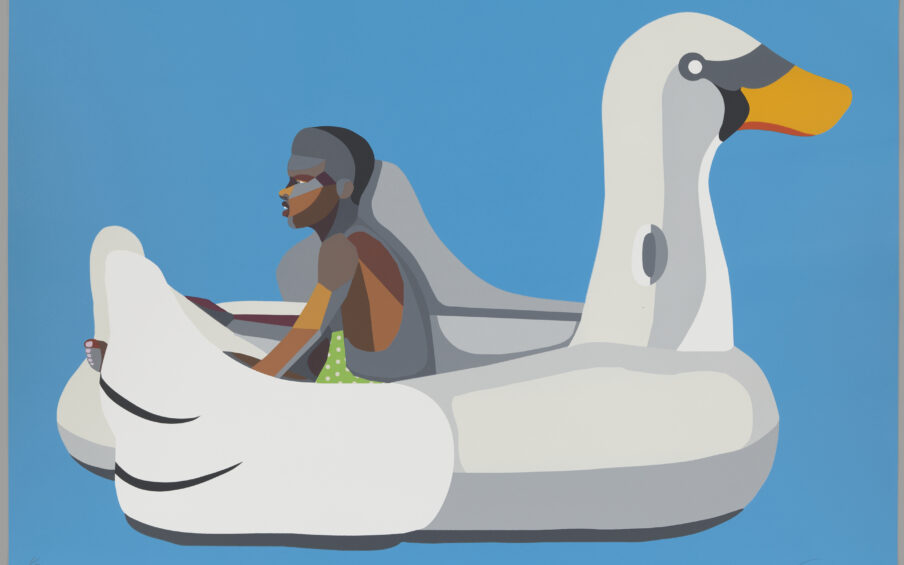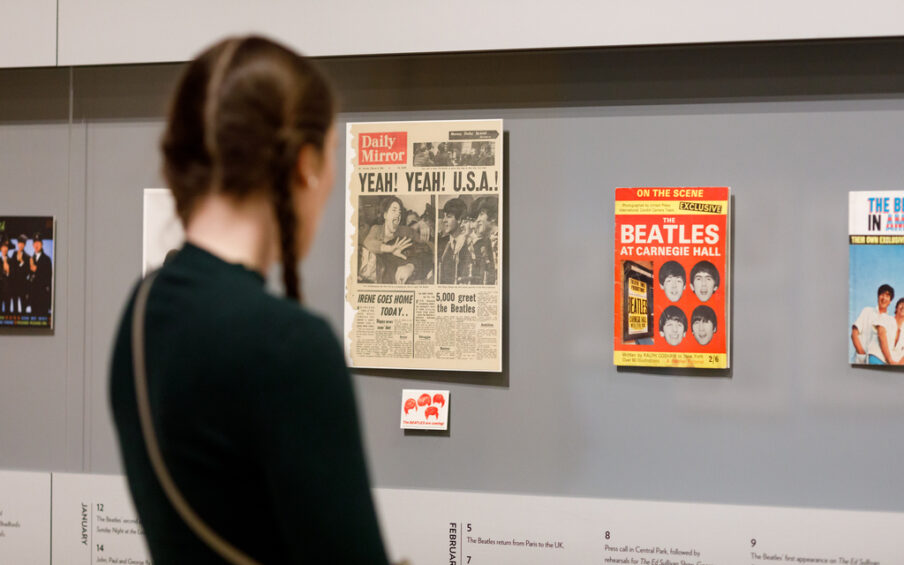The Native American art collection of the Portland Art Museum contains a number of surprising objects that have fascinating but little-known histories behind them. This set of Apache Playing Cards is a rare example of a playing card tradition among the Apache with very little published research. There is some documentation that suggests playing cards were introduced at contact by the Spanish in Mexico in the 16th century, and it is no surprise that they were adapted into Indigenous communities with established gaming practices.
Eventually, cards were manufactured by Native people themselves, with imagery loosely based on the original Spanish designs, but painted on alternative materials including tanned leather or rawhide, which was sturdier than paper. Only a handful of these cards exist in museum collections and most were collected from the Apache, who continued to use the cards well into the 19th century. The lack of interest or scholarship on these items is puzzling but it may be that early collectors dismissed them as hybrid objects or others, such as missionaries, frowned on gambling. It is a shame, since their cultural hybridity is evidence of a centuries-old tradition of Native people indigenizing introduced materials and practices, making them their own.
—Kathleen Ash-Milby, Curator of Native American Art
Apache artist, Playing Cards, ca. 1880. Colored ink on paper. The Elizabeth Cole Butler Collection, 2012.92.7a-ii



